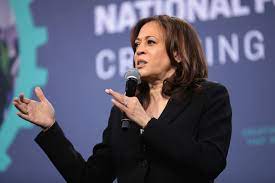AS A FEMALE CANDIDATE and a male campaign manager in the mid-1980s, the best metaphor to describe the challenges for a female candidate and her male campaign manager was akin to flying a big jet in the clouds with no radar and instrument panels. You might land the plane, but you might also fall short of the runway.
The difficulty for women running for executive positions, not legislative, has been well documented. When the Evelyn Murphy campaign began its journey for lieutenant governor in 1982, we found TV ads for just three women candidates running statewide in the US and none were for governor.
Geraldine Ferraro’s candidacy for vice president in 1984 was a significant breakthrough. Finally, there was a national set of research and data that female candidates going forward in 1986 could utilize to help them get elected. Voters could visualize for the first time what a woman in high elected office would look like and sound like. Ferraro opened the door to the next generation of women leaders.
Post Ferraro, there were positives in the mid-1980s and early 1990s—–women were just beginning to write their own checks for candidates they supported, younger and older women were genuinely excited about helping a female candidate, but the unknown was a vast chasm and the route to success was unpredictable. The rest of the 20th century showed mixed results for women seeking higher statewide or federal offices.
As we approached the first quarter of a new century, the landscape has significantly improved, with many women ably serving as governors and US senators and showing a different but sometimes more successful path for governing. There is now great radar on the plane, the instrument panels are all high tech, and there are now many capable female airplane pilots.
But the office of the presidency is still elusive for competent women as shown by Hilary Clinton’s narrow electoral loss to Donald Trump in 2016. Thirty years after Evelyn Murphy’s election as the first woman statewide constitutional officer in Massachusetts history, the 2016 campaign for president still brought questions about Clinton’s clothes and makeup and whether she was just an appendage of Bill Clinton—-and whether she had “earned” the job of president despite being elected to the US Senate on her own and serving as secretary of state for President Obama.
Other negatives for Clinton included the widespread coverage of her own reactions to Bill Clinton’s affair with Monica Lewinsky. Hilary faced criticism on whether she should have stayed married to Bill or should have left the marriage.
It was not surprising that voters knew all of Hilary’s policy positions, but little of her personal life. It was unclear to enough voters in 2016 whether Hilary Clinton was “likeable enough” as Barack Obama once said of her when competing with Hilary for the nomination in 2008
Kamala Harris has had four years to prepare to run for president. She is bright, articulate, and likeable to those who know her. She also has a supportive husband willing to put his career on hold for hers. Perhaps the best insight into what makes Kamala Harris tick was Doug Emhoff’s speech at the Democratic Convention.
Nevertheless, she is still a largely blank screen for voters and the question is whether she fills out the screen or Trump does that for her.
Her experience as a prosecutor fills in part of the screen—-she can be tough when needed, understands right and wrong, and can state she has fought for justice and freedom. But she also inherits the same challenges Joe Biden was facing—the economy, inflation, and the border.
The first two will have little or no change by election day, but immigration policy can play to Harris’s strength as a prosecutor and could make a difference in winning or losing Arizona and Nevada and perhaps make the difference in getting to 270 electoral votes. With his negatives approaching 60 percent, Trump knows his only chance is to drive up her negatives with current polls giving Trump the edge on the economy, inflation, and immigration.
With the upcoming debate on Tuesday, Harris has an opportunity to own fixing the immigration problem. Notwithstanding Harris’s long-stated opposition to building a wall on the Mexican border, part of her strategy should be to tie Trump to the defeat of the bi-partisan immigration bill in Congress. And as a female candidate, Harris can also show genuine compassion for those immigrants seeking asylum due to violence in their home countries and lay out a realistic plan to help states dealing with the overflow of migrants—a plan larger than a big wall.
Voters respond more to value propositions than actual stands on issues so Harris has an opportunity to showcase her values of integrity, honesty, and justice in addition to her current focus in speeches on freedom.
Every poll has shown that women candidates are viewed by voters as better negotiators and problem solvers than men. While male candidates such as Trump are often depicted as “tough” by voters, Harris has the opportunity in the debate to use immigration to fill in the rest of that mostly blank screen with her compassion, smarts, toughness, and the most important value a president can have – leadership.
Evelyn Murphy was the first woman in Massachusetts history elected to statewide office as lieutenant governor in 1986. Joe Baerlein was her campaign manager.
The post Women have made progress in politics, but challenges remain appeared first on CommonWealth Beacon.

